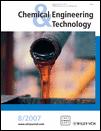Optimization of Carbon Dioxide Fixation by Chlorella vulgaris Cultivated in a Membrane-Photobioreactor
Abstract
In this paper, an enclosed membrane-photobioreactor was designed to remove CO2 using Chlorella vulgaris. The performances of four reactors, which included the presented novel bioreactor, a draft tube airlift photobioreactor, a bubble column and a membrane contactor, were compared. The effects of the gas flow rate, light intensity, quality of the inner light source, and the characteristics of membrane module on CO2 fixation were investigated. The results showed that the rate of CO2 fixation in the membrane-photobioreactor was 0.95–5.40 times higher than that in the other three conventional reactors under the optimal operating conditions




